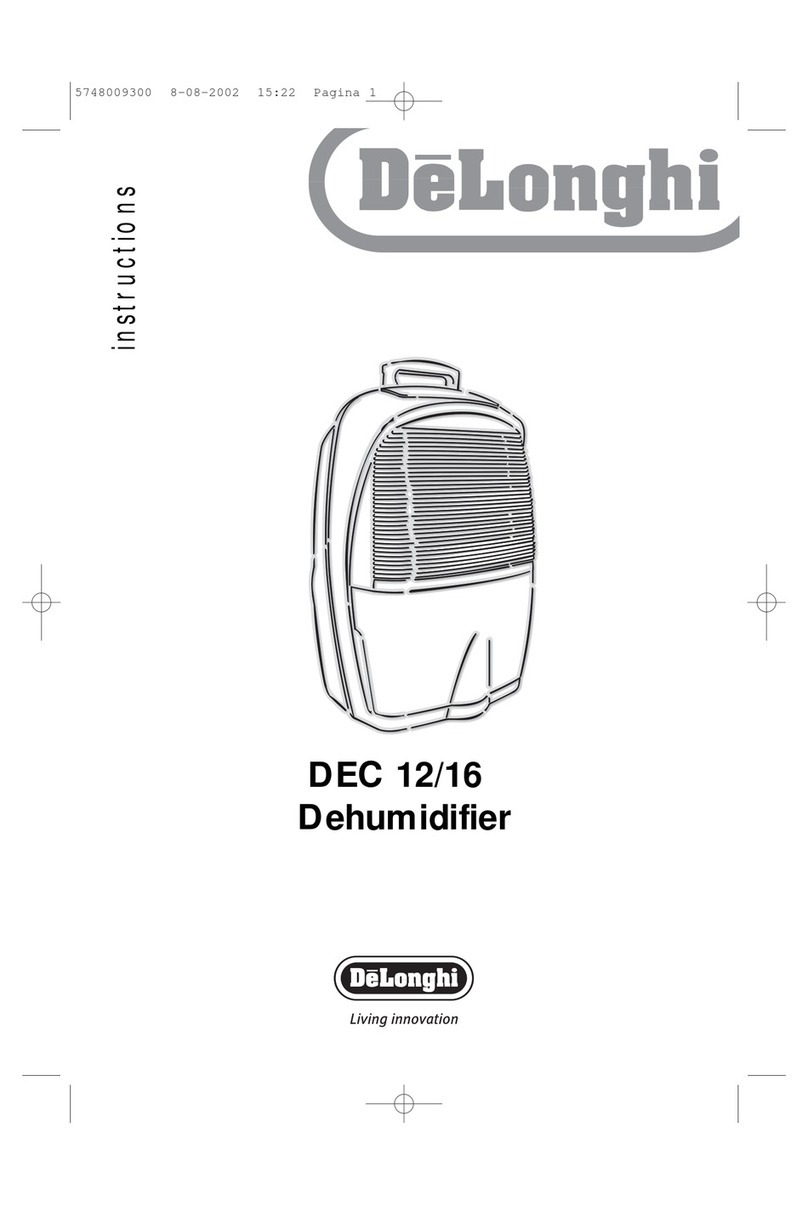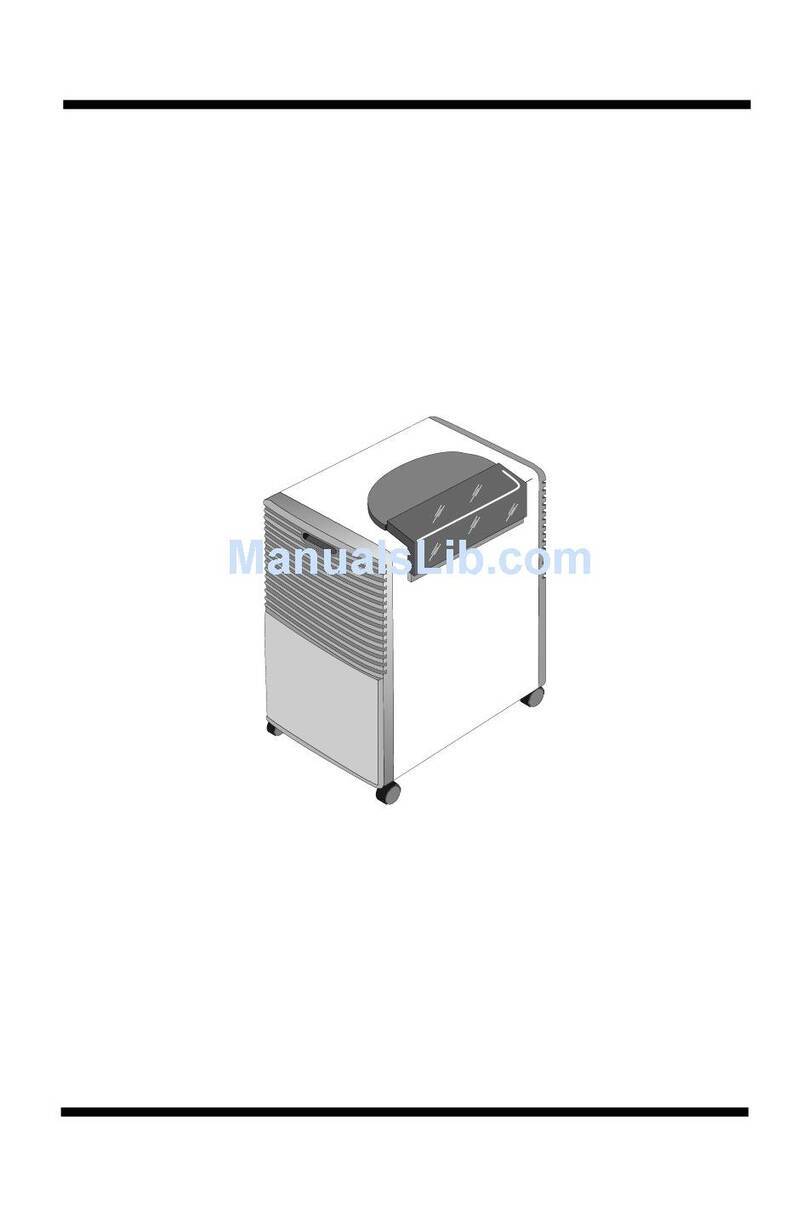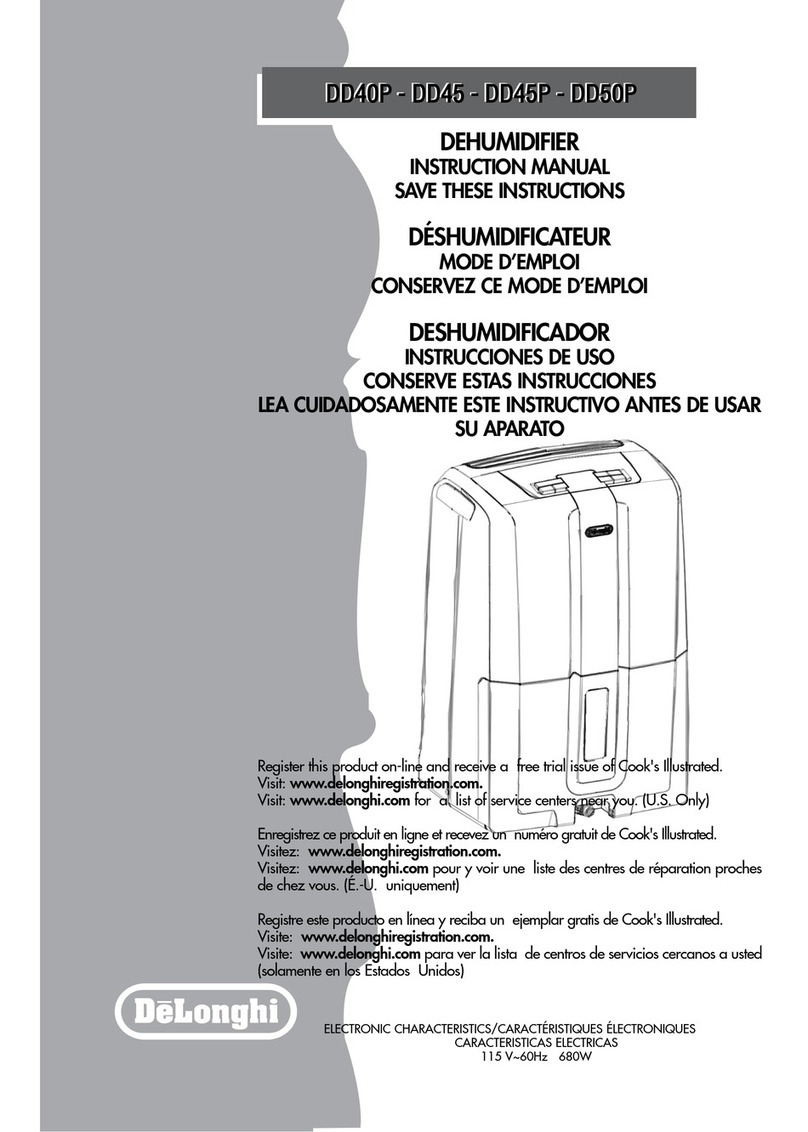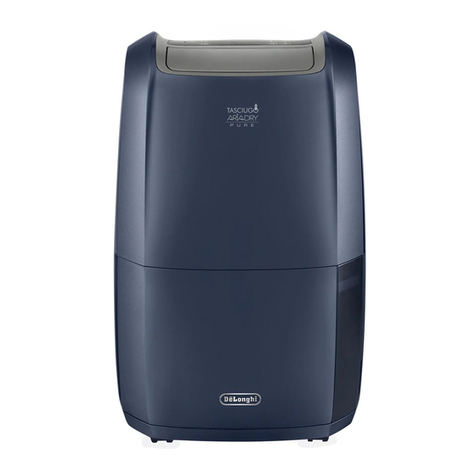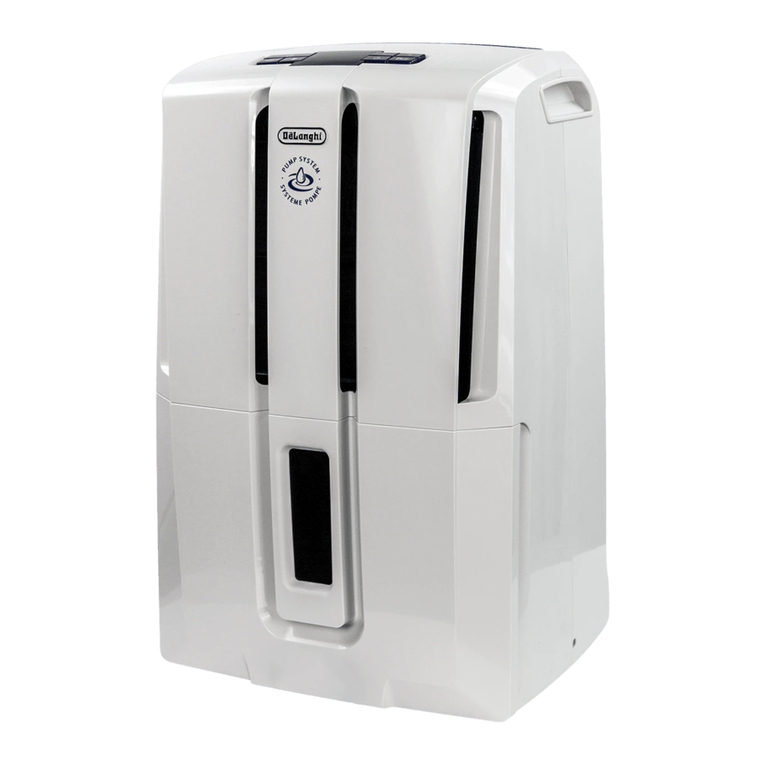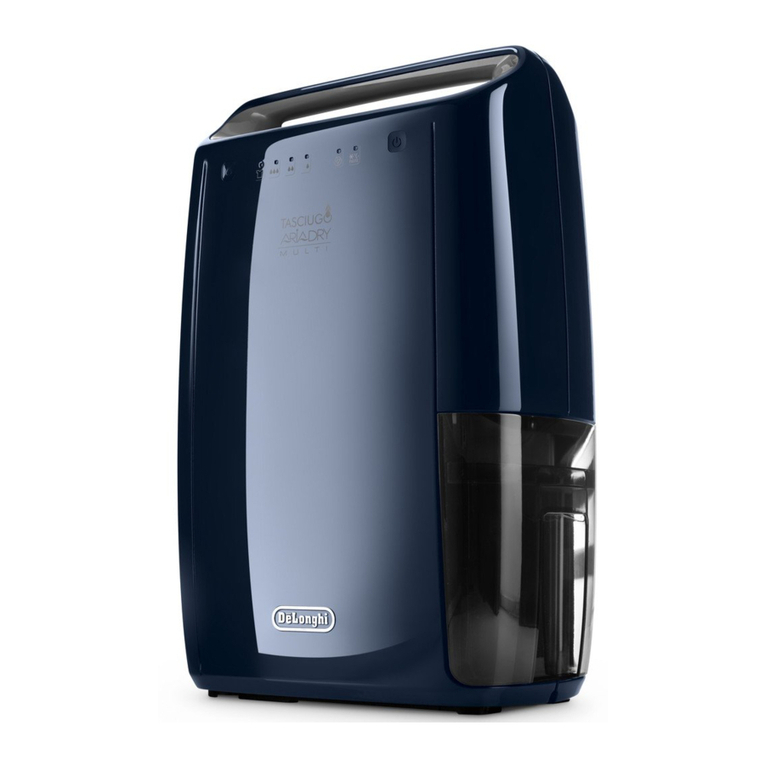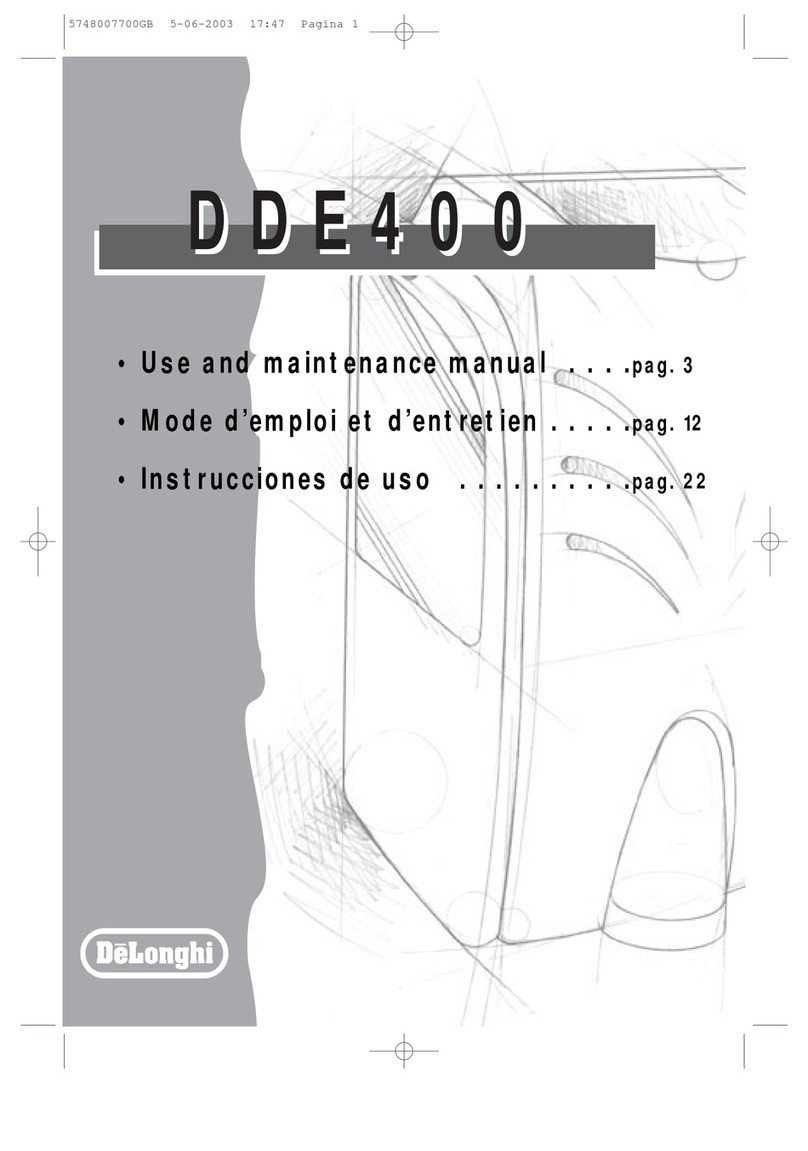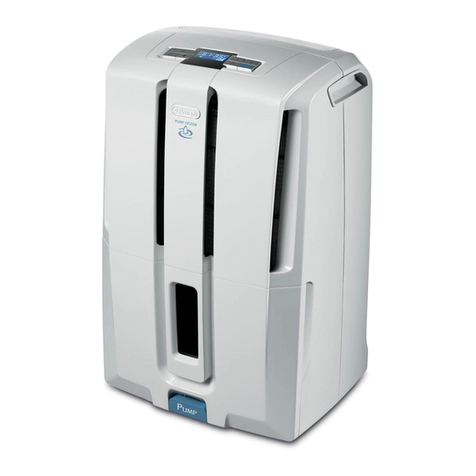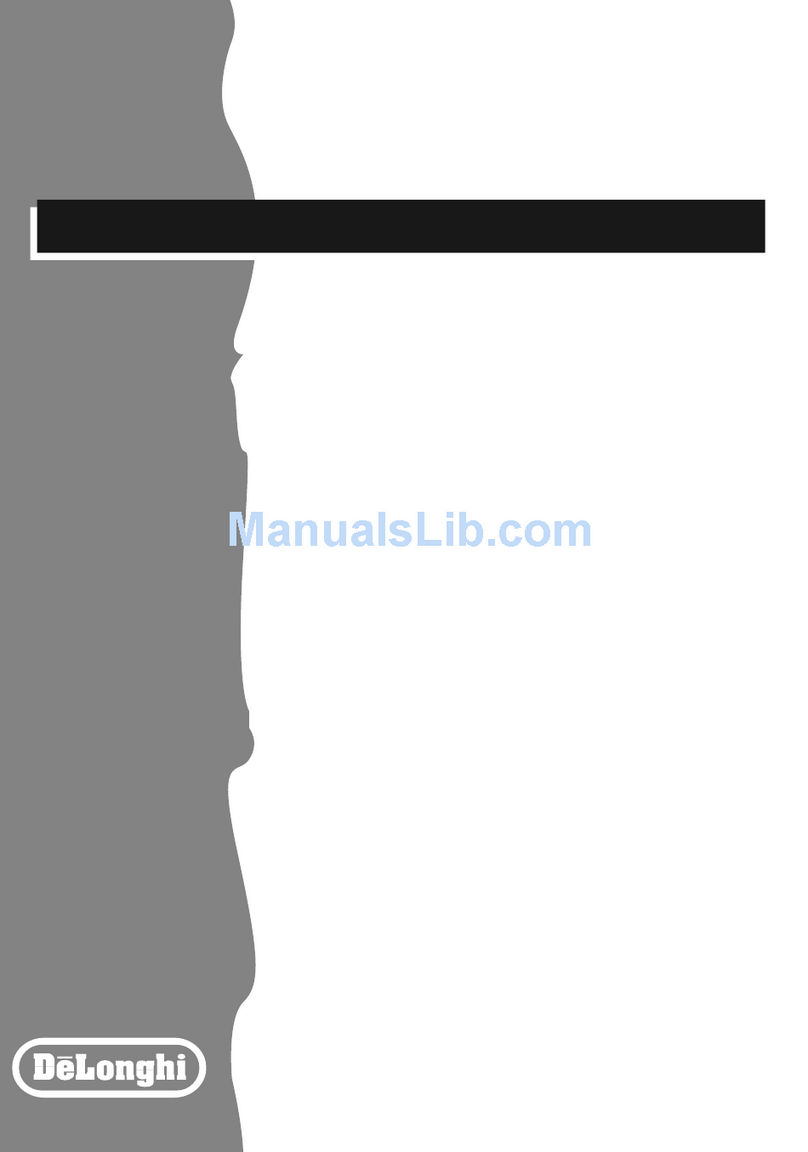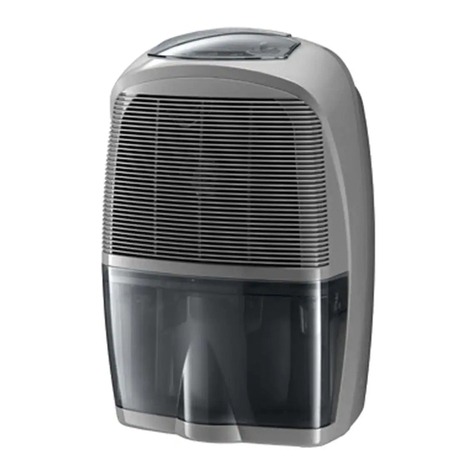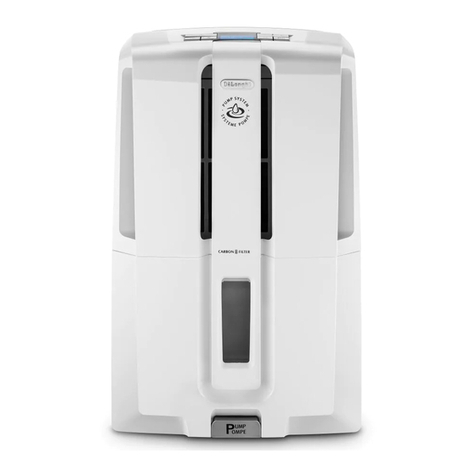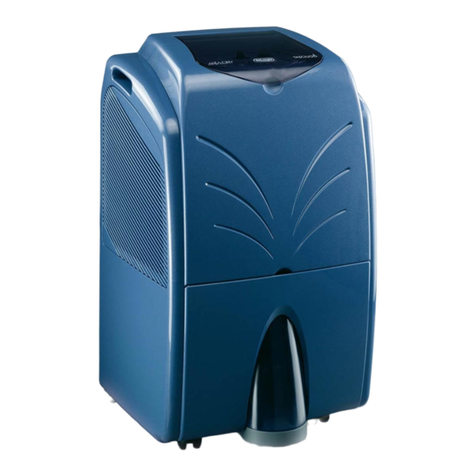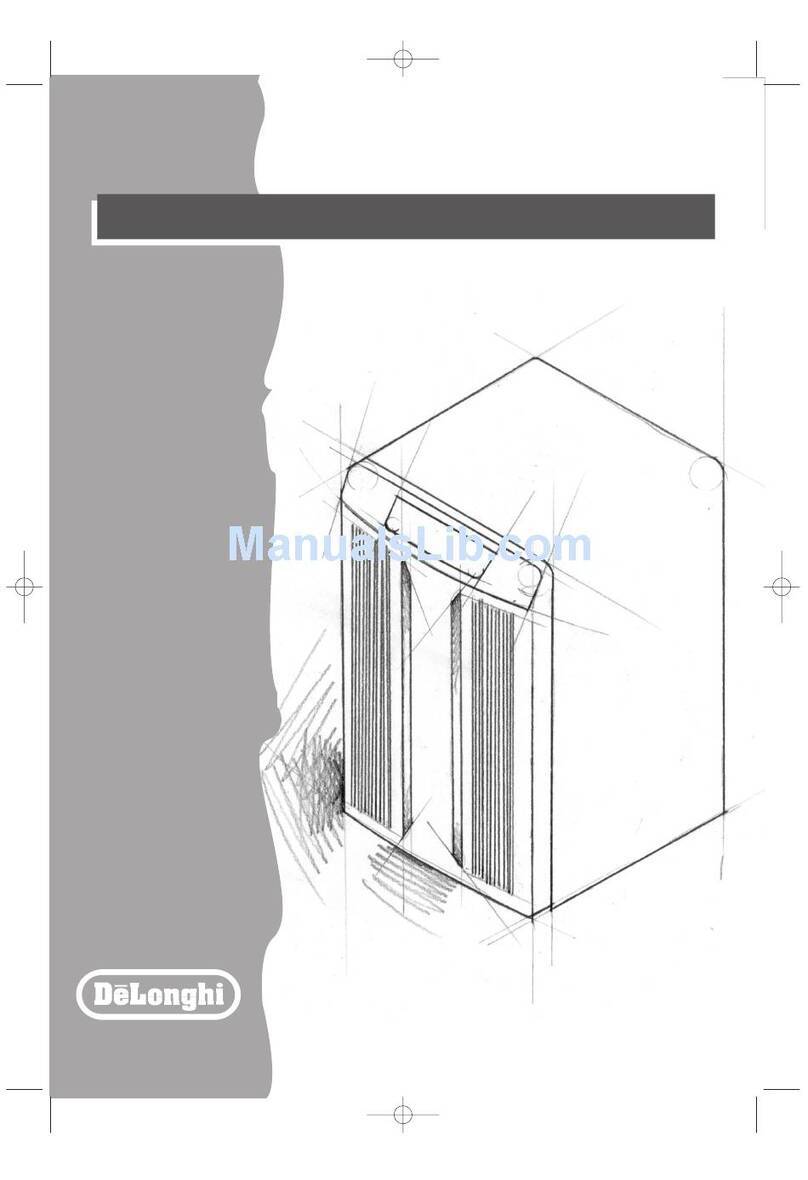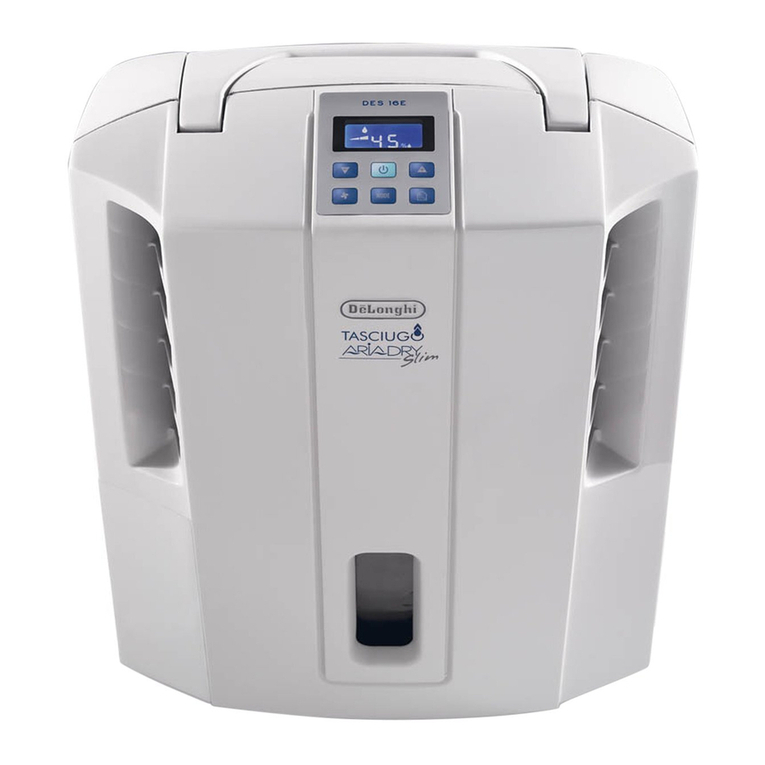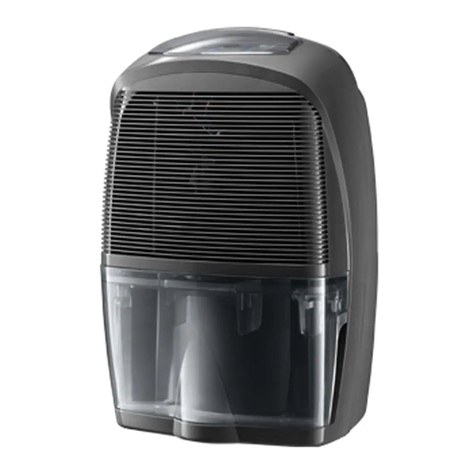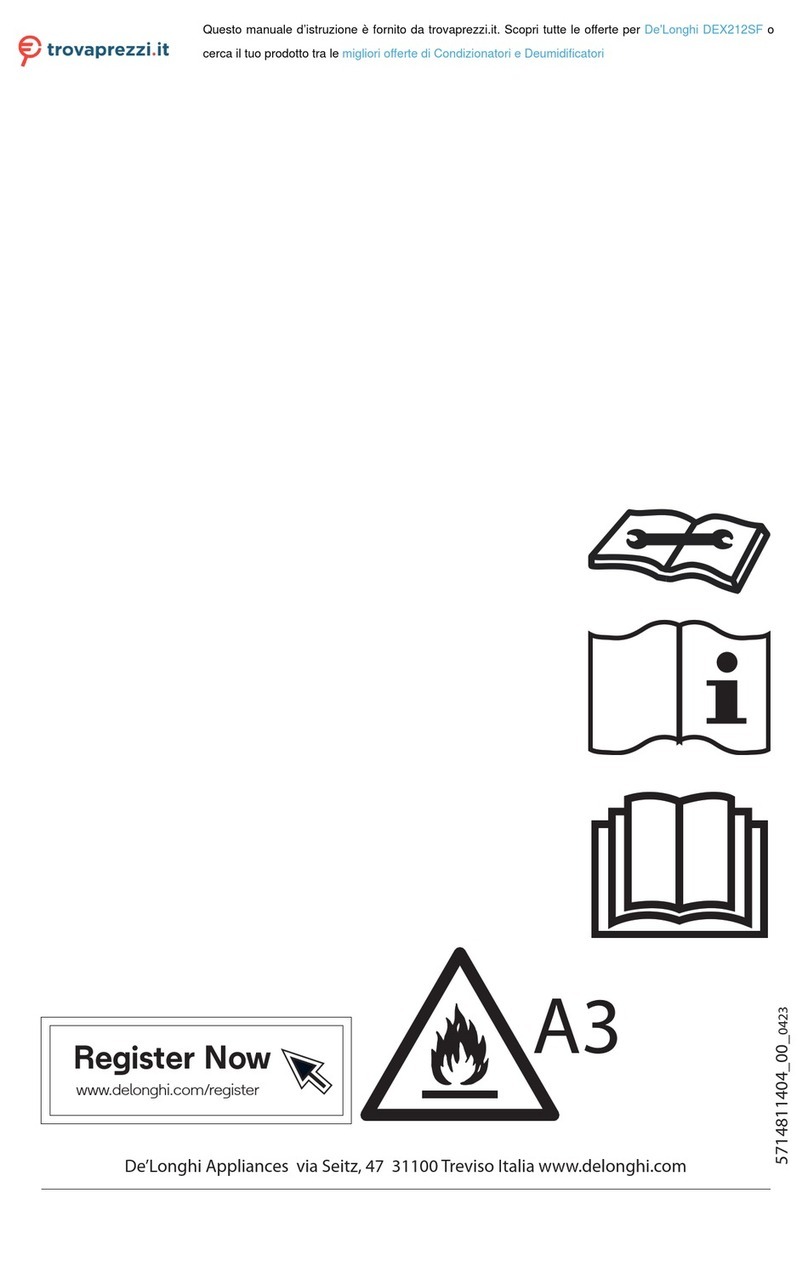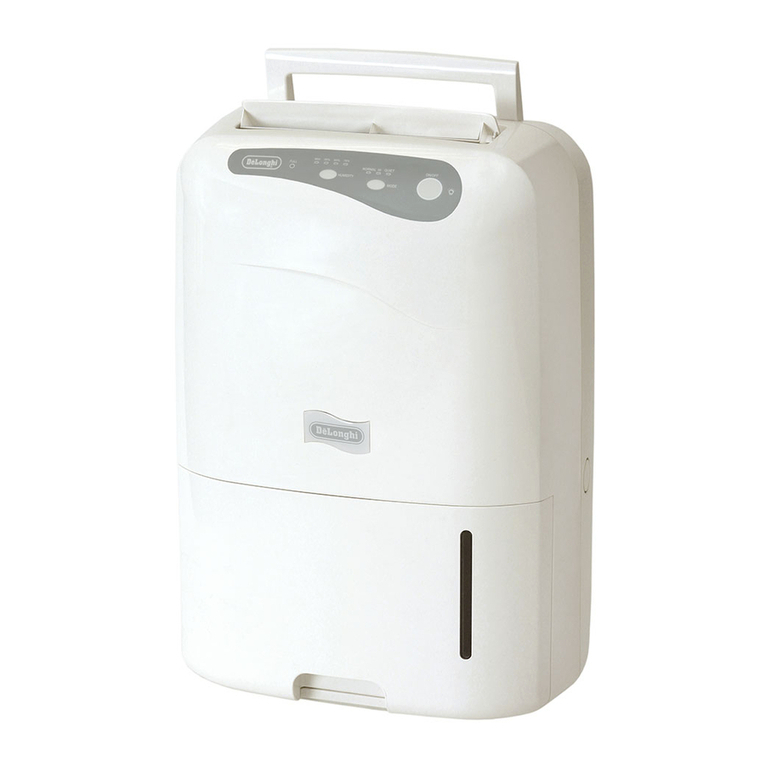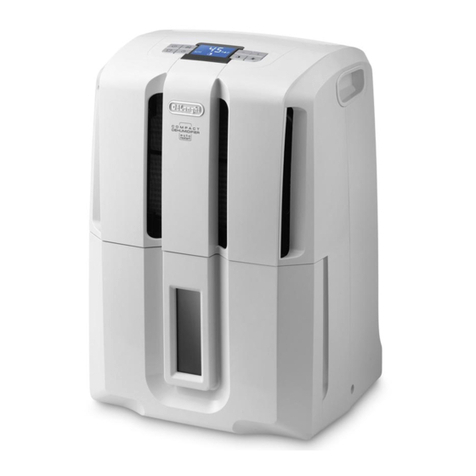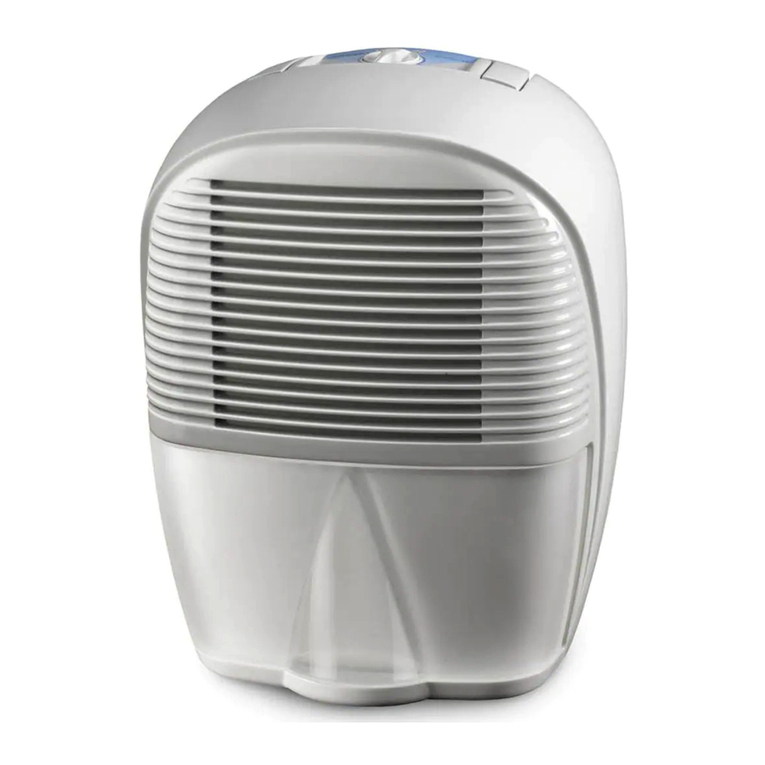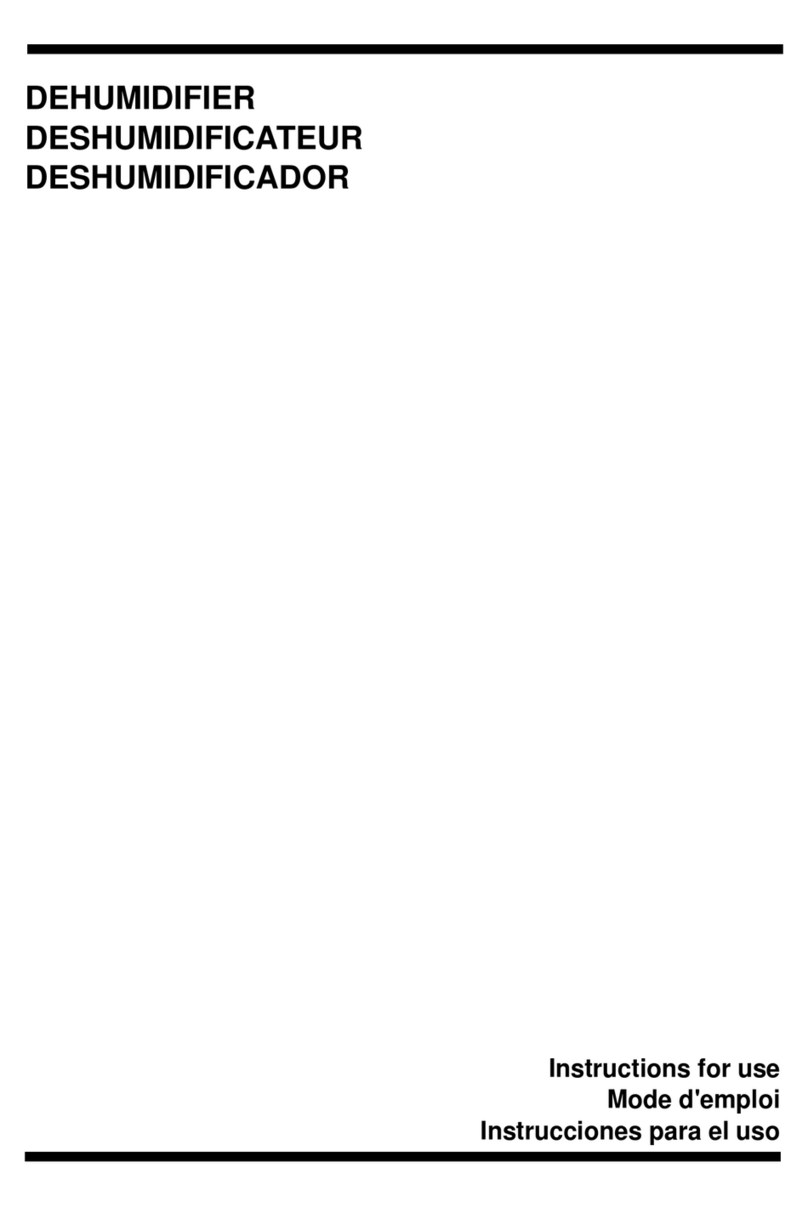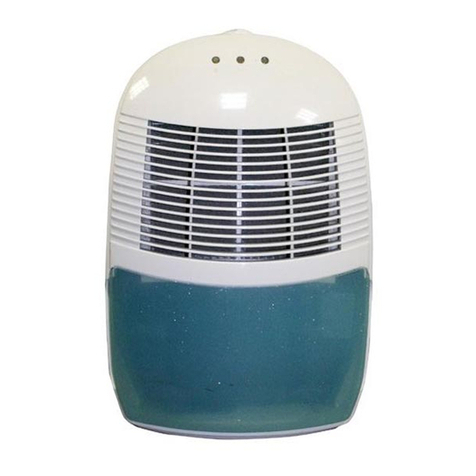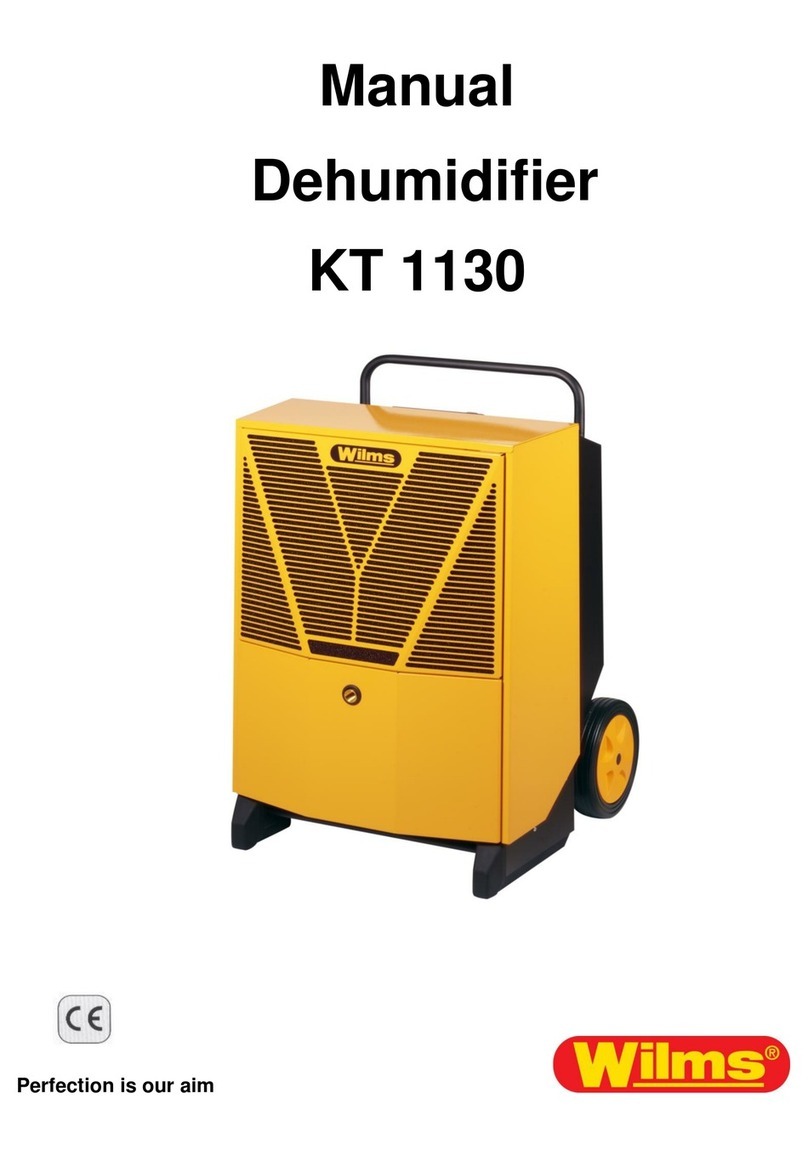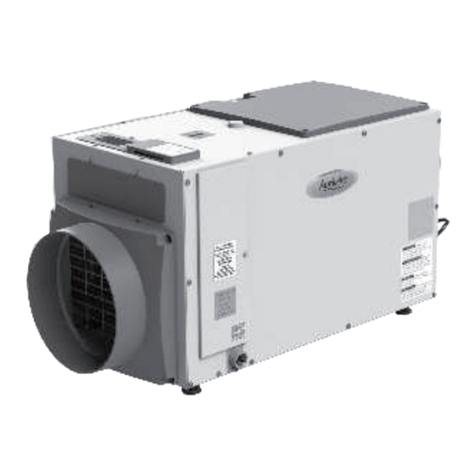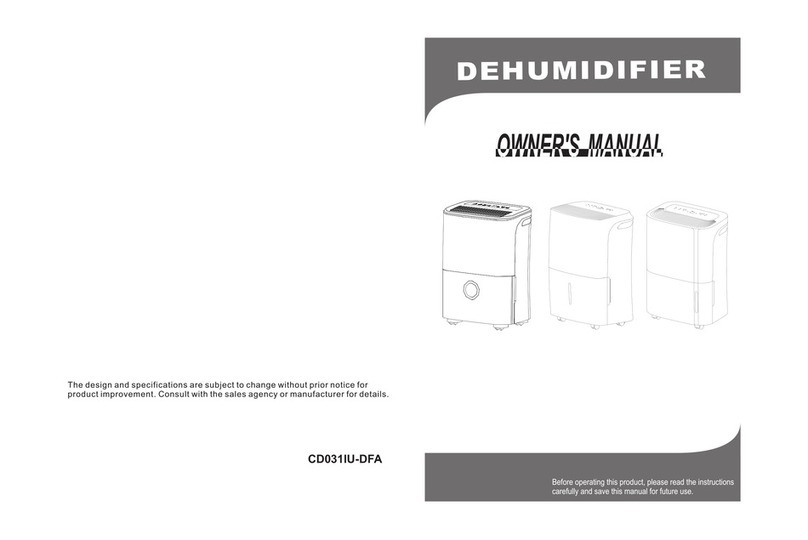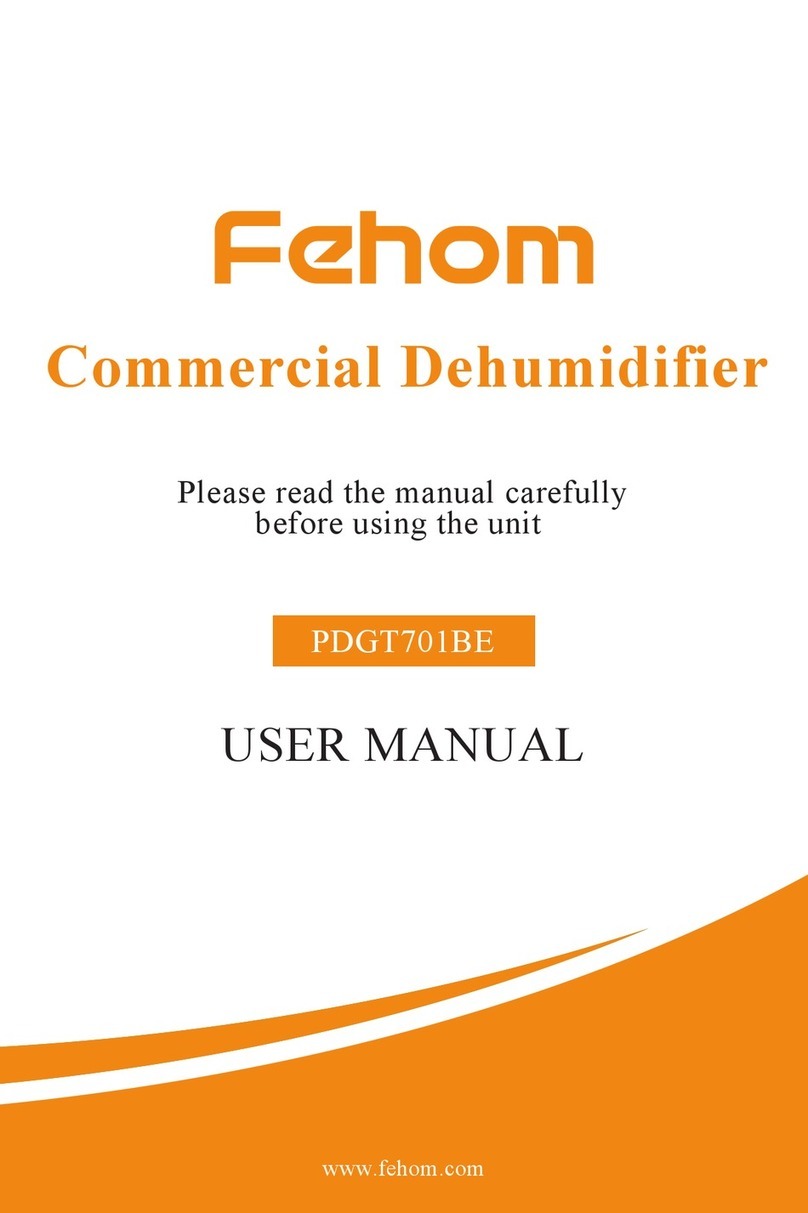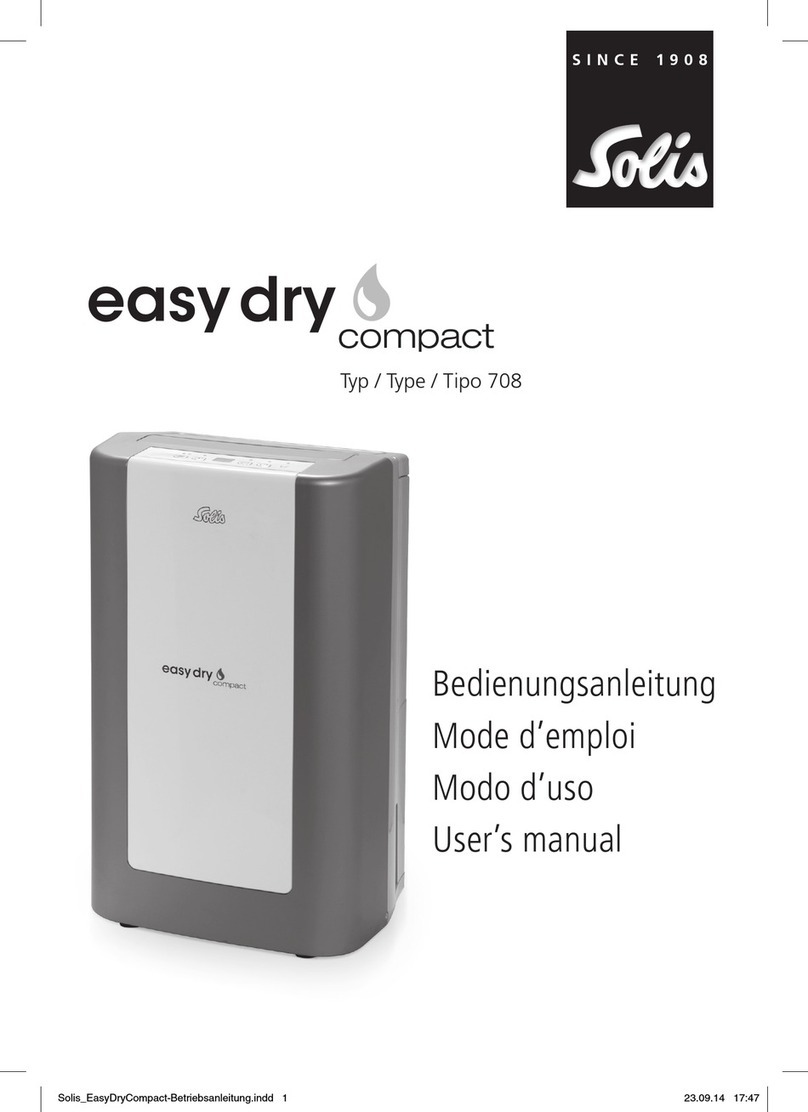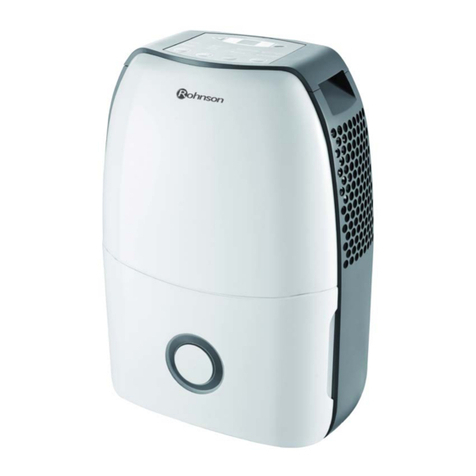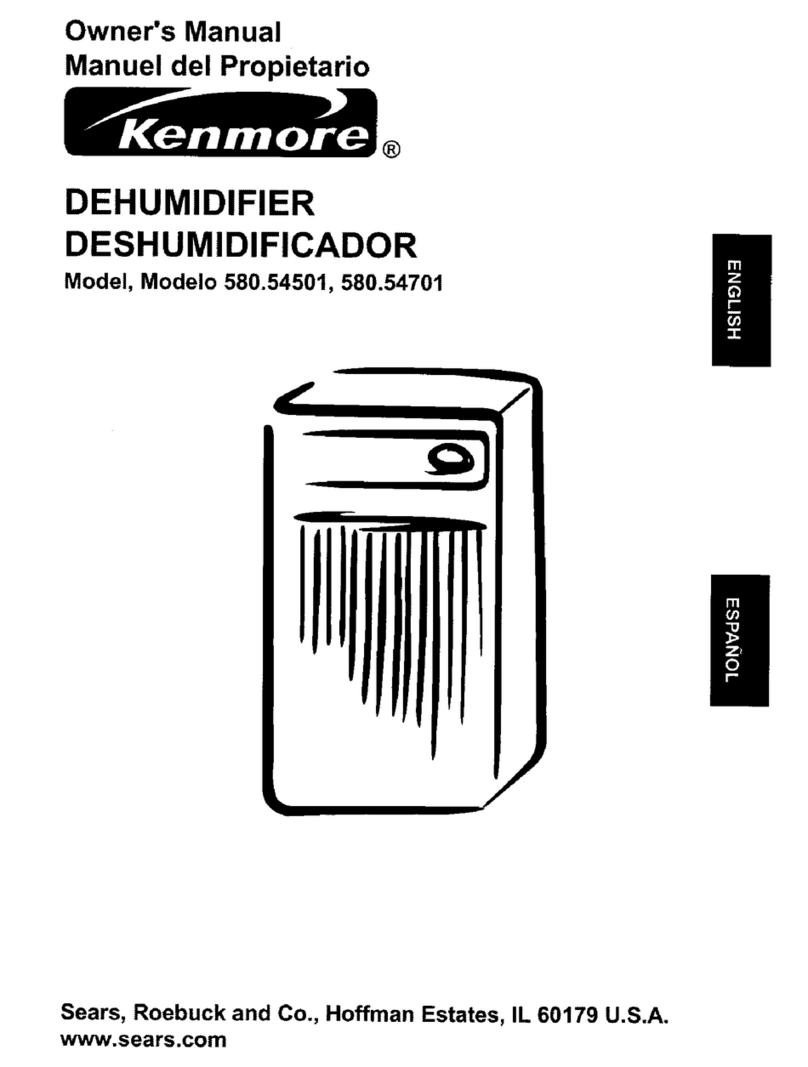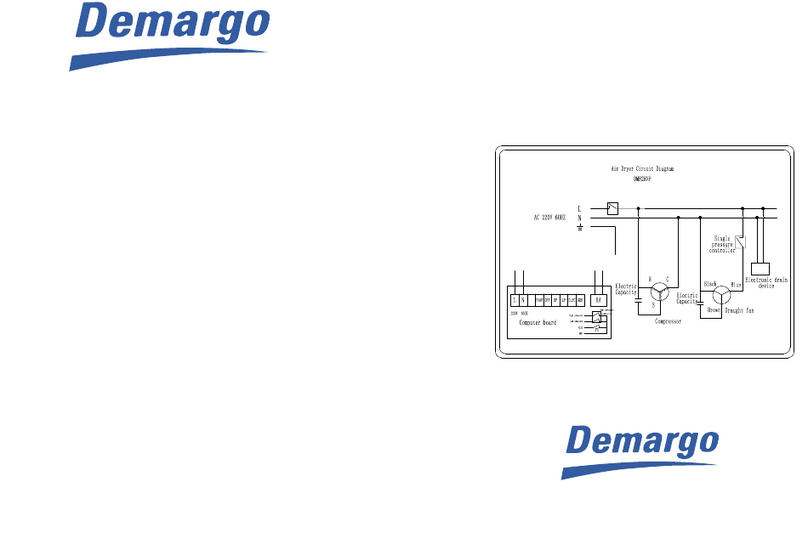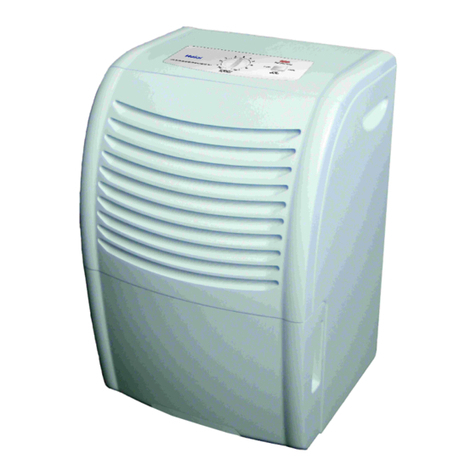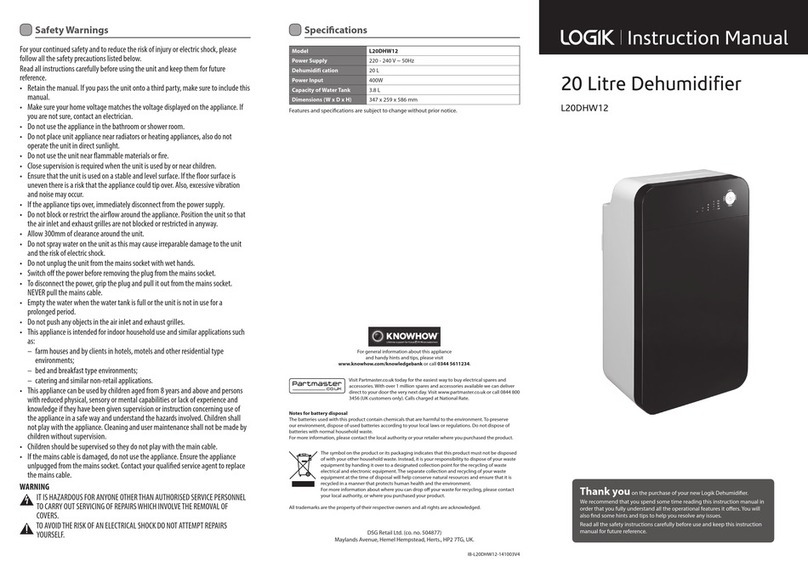
10
Note:
The appliance automatically operates at the maximum
dehumidifying capacity. Recommended for particularly humid
environments or to dry laundry more quickly.
3.3 Ventilation mode
1. Press the button (B2) . The display shows the
symbol (C2) and the selected speed (g. 9).
2. When the symbol blinks, the ventilation speed can be
adjusted by repeatedly pressing the button. The
display shows the number corresponding to the selected
speed: (1 ⇒LOW; 2 ⇒MEDIUM; 3 ⇒HIGH).
3.4 Swing function
1. Touch the button (B4) . The air outlet louver (A1)
moves up and down, evenly distributing the air ow in the
room (g. 10).
2. To stop the louver in the desired position, touch the same
button again.
3.5 Timer function
• The timer can be used to delay appliance start-up and
shut-down. This will avoid energy wastage, ensuring the
appliance operates only when needed.
• When programming is enabled, the display shows the
symbol (C5) (g. 11).
How to programme delayed start-up
1. With the appliance in stand-by mode ( ), press the
button (B6): the display will show the
symbol and the number relative to the selected hours (g.
11);
2. Set the desired number of hours by repeatedly touching the
button. 1, 2, 4, 6, 8, 12 hours can be selected.
3. After a few seconds, the appliance will return to stand-by
mode and the symbol will remain lit on the display.
4. After the programmed time, the appliance will turn on in
the previously set operating mode.
How to programme delayed shut-down
1. With the appliance running, press the button
(B6): The display shows the symbol and the relative
number of selected hours. (g. 11);
2. Set the desired number of hours by repeatedly touching the
button. 1, 2, 4, 6, 8, 12 hours can be selected.
3. After a few seconds, the display returns to the current
operating mode and the symbol remains lit.
4. After the programmed time, the appliance will
automatically turn o.
Note:
• Once the timer has been programmed, to see the remaining
time until start-up or shut-down, touch the
button once.
• To disable the timer function, press the button
twice, the symbol on the display will turn o.
4. CLEANING AND MAINTENANCE
• Always disconnect the appliance from the mains before
carrying out cleaning operations (g. 12).
• Never submerge the appliance in water.
4.1 Cleaning the cabinet
• Never pour water directly over the appliance (g. 13).
• Never use petrol, alcohol or solvents.
• Never spray insecticides or similar substances as these may
deform the plastic.
• Clean the surfaces of the appliance using a soft cloth and do
not use abrasive sponges as these may scratch the surfaces
themselves. (g. 14).
4.2 Cleaning the dust or silver ion lter
The frequency of cleaning will depend on the frequency of use:
if used daily, it is recommended to clean the lter every week.
• Remove the lter housing cover (A8) (g. 15).
• Extract the dust lter (A7)(g. 16).
• Remove any dust from the lter using a vacuum cleaner.
(g. 17).
• If the dust lter is very dirty, rinse it well with warm water.
The water temperature must not exceed 40° C.
• Leave it to dry completely and replace it in its housing.
4.3 For long periods of downtime
• Disconnect the appliance from the mains and empty the
tank (A6).
• Clean the dust lter (A7) and replace it in its housing.
• Cover the appliance with a plastic bag to protect it.
5. TECHNICAL SPECIFICATIONS
Power supply voltage See rating plate
Rated input power “
Maximum input power “
Defrost device Yes
Hygrometer Yes
Ventilation speed 3
Filter Yes
Operating limits:
temperature 2°C - 30°C
relative humidity 30 - 90%
